
General description (Fig. 1)
A Brush head
B Handle
C Brush head storage pins
D Charger pin
E Charger
Important
Read this user manual carefully before you use the
appliance and save it for future reference.
Check if the voltage indicated on the bottom of
the charger corresponds to the local mains voltage
before you connect the appliance.
Keep the charger away from water. Do not place or
store it over or near water contained in a bathtub,
washbasin, sink etc. Do not immerse the charger in
water or any other liquid.
Never use the charger if it is damaged or if the
cord or plug is damaged.
The cord of the charger cannot be replaced. If the
cord is damaged, the charger must be discarded.
Make sure the socket is live when you recharge
the toothbrush. The electricity supply to sockets in
mirror cabinets over washbasins or shaver sockets
in bathrooms may be cut off when the light is
turned off.
If you have had oral or gum surgery in the previous
2 months, consult your dentist before you use the
toothbrush.
Do not use other brush heads than the ones
recommended by the manufacturer.
Replace the brush head every 3 months or sooner
if signs of wear appear, such as crushed or bent
bristles.
This appliance is not intended for use by persons
(including children) with reduced physical sensory
or mental capabilities, or lack of experience and
knowledge, unless they have been given supervision
or instruction concerning use of the appliance by a
person responsible for their safety.
Children should be supervised to ensure they do
not play with the appliance.
Electromagnetic elds (EMF)
This Philips appliance complies with all standards
regarding electromagnetic elds (EMF). If handled
properly and according to the instructions in this user
manual, the appliance is safe to use based on scientic
evidence available today.
Preparing for use
Charging the appliance
1 Charge the appliance for at least 16 hours before
you use it for the rst time.
Make sure the appliance is switched off when you
start to charge it (Fig. 2).
When the battery is being charged, the green
indicator light is on (HX1630 only).
You can leave the toothbrush in the charger and let
it charge continuously.
Optimising the lifetime of the battery
After you have charged the toothbrush for the rst time,
do not recharge it between brushings. Continue to use it
until the battery is empty before you recharge it again.
Recharge the appliance when the motor almost
stops running.
Repeat this procedure three times in a row.
To extend the lifetime of the battery, repeat this
procedure every 6 months.
Using the appliance
1 To mount the brush head on the toothbrush, insert
it into the bayonet catch and turn it clockwise a
quarter turn (Fig. 3).
This prevents the brush head from becoming detached
due to vibration.
2 Put toothpaste on the brush head.
3 Place the brush head in your mouth (Fig. 4).
4 Press the on/off button to switch on the
toothbrush and start to brush your teeth (Fig. 5).
For the best brushing method and the minimum
brushing time, see ‘Brushing tips’.
,
,
,
,
,
,
,
,
,
,
,
,
,
-
-
-
,
Brushing tips
Brushing method
1 Place the brush head against the tooth in such a
way that it covers the surface of the tooth as well
as the gum line (Fig. 6).
2 Hold the brush head in this position for a
few seconds and then move on to the next
tooth (Fig. 7).
The round brush head removes plaque from the teeth
and beneath the gum line.
The individually moving Active Tip cleans between the
teeth.
3 Guide the brush head carefully along the teeth and
molars (Fig. 8).
Tip: Make sure you clean all surfaces of the teeth (inside,
outside and chewing surface) as well as the gum line
properly. A xed brushing pattern prevents you from skipping
certain areas.
Tip: For optimal dental hygiene, use dental oss and
toothpicks in addition to the electric toothbrush.
Minimum brushing time
A brushing time of 2 minutes is generally long enough
to clean your teeth properly. If you want, you can brush
longer than 2 minutes for an even more thorough clean.
A red indicator light will blink to indicate that
2 minutes have passed (HX1630 only).
Note: If plaque is removed properly, the gums will have a
pink colour and will rmly surround the teeth. Healthy gums
do not bleed when you eat or brush your teeth.
Note: If your gums bleed slightly the rst few times you use
this toothbrush, this bleeding will generally stop after a few
days. If your gums continue to bleed, consult your dentist or
dental hygienist.
Gum protection
1 The Gum Protection system guarantees that you
will not exert too much pressure on the teeth and
gums.
2 If you exert too much pressure on the toothbrush,
you will feel and hear a click when the brush
head exes backwards. As soon as you reduce the
pressure, the brush head will return to its normal
position. This will protect your gums (Fig. 9)
Note: This will probably happen a few times when you
rst start using the brush. After some time you will have
discovered the optimal brushing pressure and the brush
head will ex backwards less often.
Cleaning and storage
1 Switch on the toothbrush and rinse the brush head
under a hot tap (max. 60 cC) (Fig. 10).
2 Switch off the toothbrush. Detach the brush head
and rinse the inside of the brush head (Fig. 11).
3 Switch on the toothbrush and rinse the drive
shaft under the tap to remove toothpaste
residues (Fig. 12).
4 Store the brush head on the brush head storage pin
on the charger.
5 Clean the charger with a moist cloth (Fig. 13).
Unplug the charger before you start to clean it.
Replacement
1 Replace the brush head every 3 months for the
best brushing results.
Also replace the brush head when the bristles start
to bend outwards.
You can obtain new brush heads from the shop where
you purchased the toothbrush.
All round Philips replacement brush heads can be used.
Environment
Do not throw away the appliance with the normal
household waste at the end of its life, but hand it in
at an ofcial collection point for recycling. By doing
this, you help to preserve the environment (Fig. 14).
The built-in rechargeable battery contains
substances that may pollute the environment.
,
,
,
,
Always remove the battery before you discard the
appliance and hand it in at an ofcial collection
point. Dispose of the battery at an ofcial collection
point for batteries. If you have trouble removing the
battery, you can also take the appliance to a Philips
service centre. The staff of this centre will remove
the battery for you and will dispose of it in an
environmentally safe way.
Disposal of the battery
Make sure the battery is completely empty when you
dispose of it.
1 Let the appliance run until it stops before you
remove the battery.
2 Open the handle (Fig. 15) .
3 Use a screwdriver to pry the battery out of the
battery holder (Fig. 16).
The toothbrush is no longer watertight once
the housing of the toothbrush has been open. When
you open the housing, your guarantee becomes invalid.
Guarantee & service
If you need information or if you have a problem, please
visit the Philips website at www.philips.com or contact
the Philips Customer Care Centre in your country
(you nd its phone number in the worldwide guarantee
leaet). If there is no Customer Care Centre in your
country, go to your local Philips dealer or contact the
Service Department of Philips Domestic Appliances and
Personal Care BV.
Troubleshooting
If you are unable to solve your problem with the
information below, please contact the nearest Philips
service centre or the Philips Customer Care Centre in
your country. You can also contact us online at www.
philips.com.
Problem Solution
The toothbrush
does not work
at all, although it
has been in the
charger overnight.
Make sure that the plug of the
charger is properly inserted into
the wall socket.
Make sure the socket is live (see
chapter ‘Important’).
Make sure the toothbrush is
switched off and recharge it for
at least 16 hours.
The motor of the
toothbrush works,
but the brush head
doesn’t.
Check if the brush head has
been properly attached to
appliance (see also chapter ‘Using
the appliance’).
The brushing
power of the
toothbrush has
greatly decreased.
The toothbrush must be
recharged. If you normally leave
the toothbrush in the charger
continuously, you may have to
extend the lifetime of the battery
as described in chapter ‘Preparing
for use’.
The toothbrush
doesn’t clean my
teeth as well as
before.
Replace the brush head.
ENGLISH


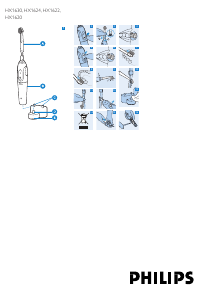

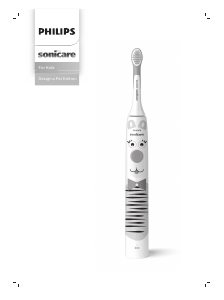
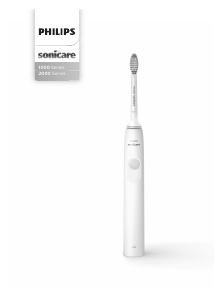
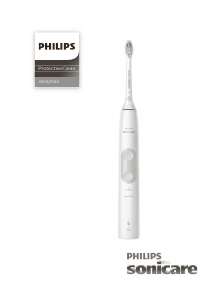
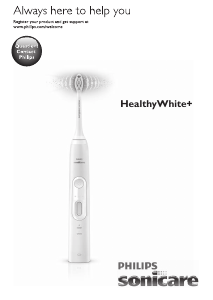
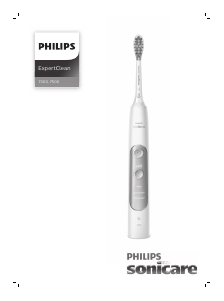
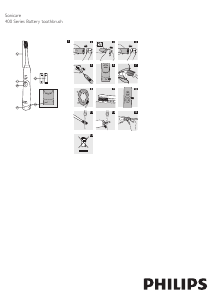
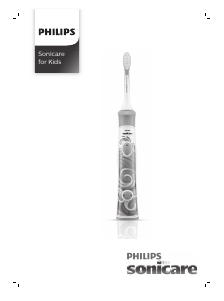
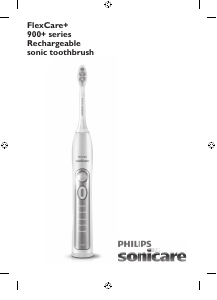
Únase a la conversación sobre este producto
Aquí puedes compartir lo que piensas sobre Philips HX1630 Sonicare Sensiflex Cepillo de dientes eléctrico. Si tiene alguna pregunta, primero lea atentamente el manual. Puede solicitar un manual utilizando nuestro formulario de contacto.